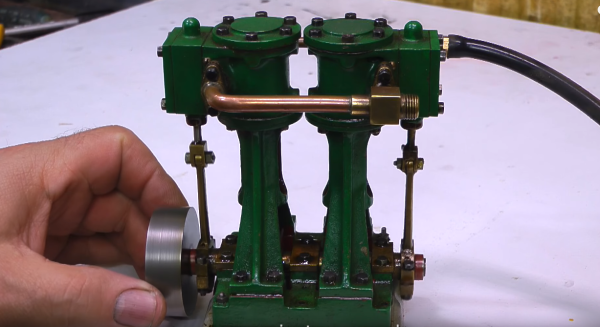Over the decades we have seen a lot of methods for powering LEGO-based contraptions, ranging from LEGO Technic pneumatics to electric motors, but what about steam power? We have all seen those cute little model steam engines that can definitely put out some power. Sure, you can just drop those in like a kind of confused internal combustion engine, or you can try to make a steam engine that actually tries to be directly compatible with LEGO.
While exploring this topic, [Jamie’s Brick Jams] on YouTube found that the primary concern here is simply the very hot steam produced by the boiler. While not a surprise to anyone who has ever run a model steam engine, this poses a major challenge to the thermoplastics used by LEGO.
Obviously a boiler cannot be made out of plastic, but the steam turbine can. That said, material selection here is key, as the hot, wet steam produced by the boiler demolishes PLA parts and ruined the original and very unsafe copper boiler in the process. Ultimately a LEGO Technic-compatible steam turbine was printed in high temperature resistant PAHT-CF and PC filament, which enables a steam-powered LEGO walker to come to life, albeit with a distinct lack of power.
Model steam engine enthusiasts are of course quick to point out that you should try to create dry steam through superheating, definitely add a safety valve and so on, all of which should make for an even more powerful and safe LEGO steam engine. For a rundown of how steam engines work, [Lawrie] did an excellent video on the basics a while back, as well as a video playlist full of demonstrations of both classical Mamod model engines and questionable modern takes.
Suffice it to say that although model steam engines look like toys, they involve fire, hot steam and other fascinating ways to melt things, light them on fire and cause painful injuries, so definitely follow a safety briefing before attempting any of it at home.












